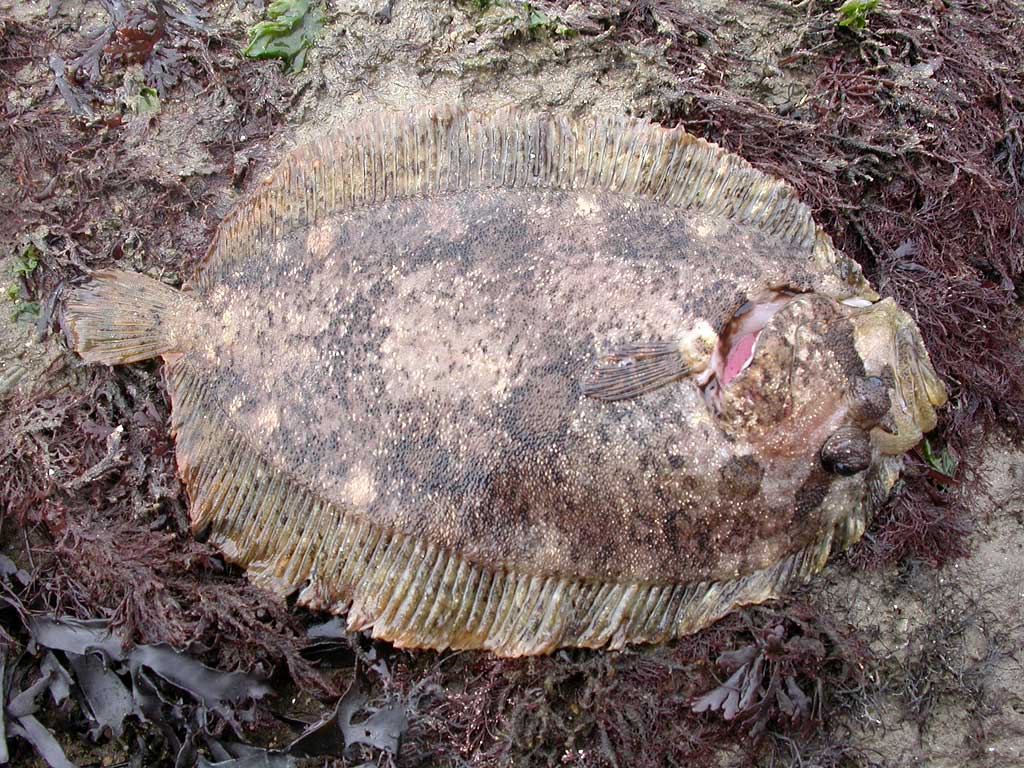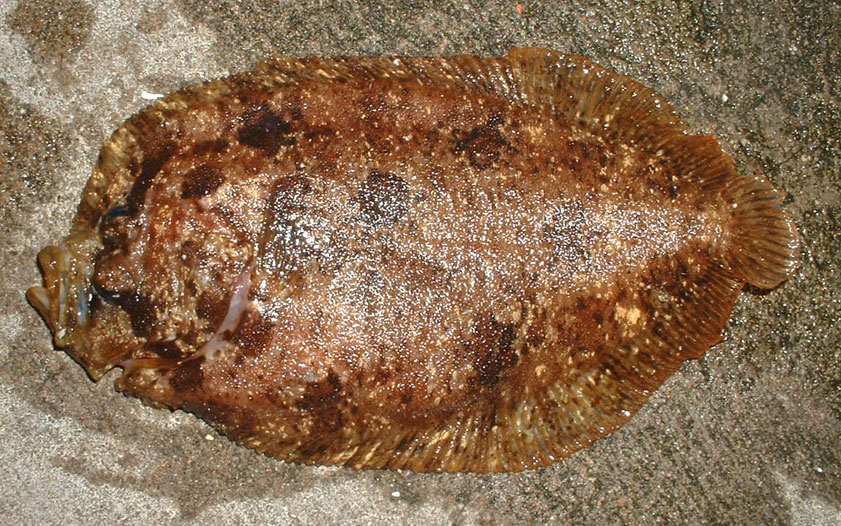
|
|
| Porifera |
| Ctenophora |
| Cnidaria |
| Mollusca |
| Annelida |
| Arthropoda |
| Other Phyla |
| Chordata |
|
|
 |
Common
Name(s):
Topknot, Rock Sole Scientific Name: Zeugopterus punctatus Family: Usual Size: |
Photograph
by Ron Barrett
| Identification:
Similar species:
A commensal
worm sometimes occupies the gills.
Topknot
Photographed
at Sedgers Bank,
Gower,
south Wales, by Owain Gabb
in April 2012.
Information wanted: Please
send any records of this fish, with location, date, who discovered it,
how it was identified, prevalence, common name and any other details to
Reports:
20
August 2010
21
January 2007
Report
by Bill Walden (Alderney)
21 August
2006
While shore fishing from Pittenweem breakwater on the east coast of Fife in Scotland on Monday, I caught a smallish flatfish which I think I have identified as a Topknot. Report
and Photographs by
Bob Kell
The commensal
worm can be seen venturing out from the gills.
Hannafore
Point, Looe
Despite being prodded and poked, caught and netted out of the water, the fish, when returned, swam around but refused to leave the area where it was caught. Is it likely that it was guarding eggs? I no nothing of this species' biology but it preferred being caught than swimming away. It would have made a lovely aquarium specimen but I let it be in case it was nurturing a brood. by
Jon
Makeham
One was
found on a Socite Jersiaise walk on Fliquet beach, NE Jersey in
1999, under a rock surrounding by water just above the LW mark it was a
very large specimen about 340 grams (12 oz) in weight, it was eventually
returned to the sea and appeared very relaxed. I had only seen very small
fish previously in local waters.
Nicolas Jouault I have received reports of flatfish under rocks intertidally off Cornwall, especially Looe (in the Big Pool) which from their behaviour of clinging to the underside of the rocks, I thought was the Topknot, Zeugopterus punctatus, from over a decade ago. I have not subsequently received any other reports, and as time lapsed I was apt to put these reports to the back of my mind. This was further emphasised by aquarium study that found that this fish was intolerant of high temperatures. However, I have measured the temperature in the large Devon and Cornish pools and many of the large ones fail to exceed 20° C despite the low spring tides occurring in the middle of the day. Topknots are not found intertidally on Sussex shores, although they are found in deeper water. 17
August 2001
Lindsay
Stutchbury & Terry Grice.
Fish Page
Hi Guys
It
was caught on the bottom hook (Size 2) of what's known as a Wessex Rig.
The flowing trace in this case being about 3 ft long, with a final hook
length of about 10 inches. Sorry I haven't gone metric yet ! It fell to
a whole freshly peeled peeler crab which was about half the size of a credit
card. A small whiting (about 4 oz) was caught at the same time from
the top
Strong currents run along the Breakwater which is a about a mile out to sea. As the tide comes in, so the current runs strongly West, then there is a very short slack period (20 minutes or so) before it reverses and runs East for a short time (30 - 45 minutes). It then seems to realise that it is going in the wrong direction and so goes slack, as if checking its compass for around 20 minutes, before heading off like a steam engine directly back West again. It continues going West until high tide, when another slack period of around an hour or so is experienced. The currents on the inner side of the seawall where I caught the Topknot, follow this same pattern but are not quite as strong as those experienced when fishing the outer seawall. The fish was caught during the 'compass checking' slack period which occurred about an hour before high tide. The Topknot was weighed on the club scales and came to exactly 8 ozs. It was identified as a Topknot by the steward of the Dover Sea Angling Club who said that one or two got caught from the Breakwater every year. In fact he made specific mention of one caught just a few weeks ago that he thought was about 3 times the size of my fish. After weighing the fish was returned to the water, where it arched its back and headed in a steep swift dive for the bottom. Trust
that some of this stuff is useful to you !
September
2002
Report
by Ray Dennis on the Cornish
Mailing List
|
| FIVE KINGDOMS TAXONOMIC INDEX TO BRITISH MARINE WILDLIFE |
|
|
|
|
|
News 2018 |
Membership Form |
|






